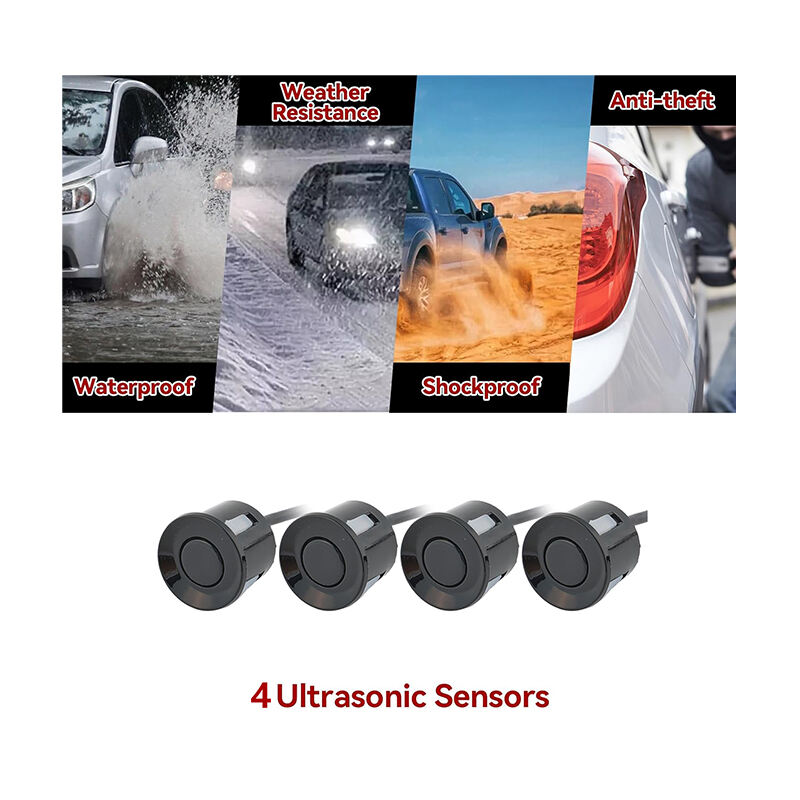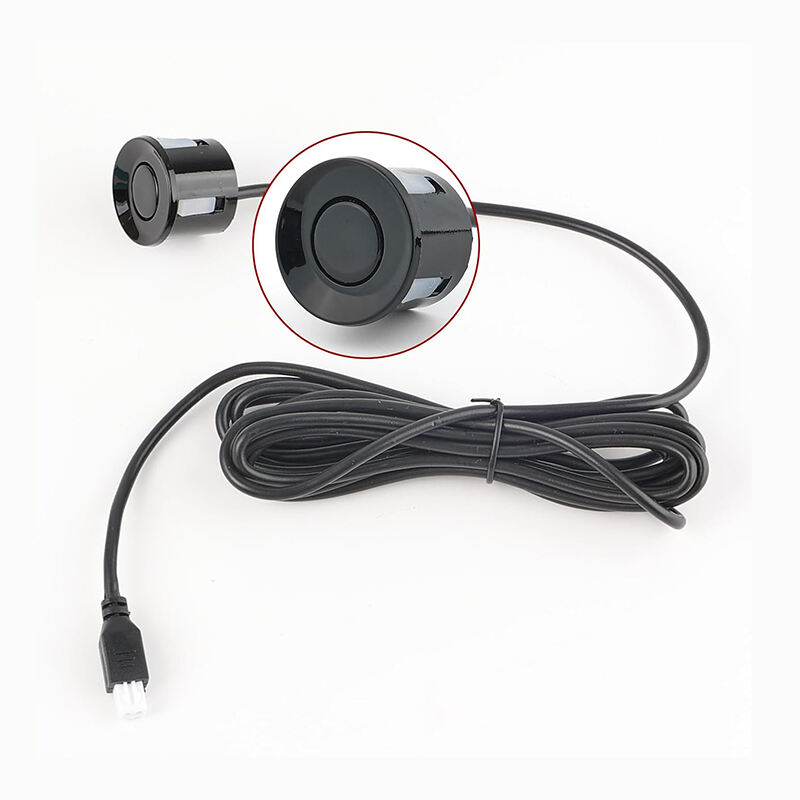Transform Your Vehicle's Safety with Modern Proximity Detection
As vehicles become increasingly sophisticated, aftermarket car proximity sensors have emerged as essential upgrades for drivers seeking enhanced safety and peace of mind. These innovative devices provide crucial awareness of surrounding objects, making parking and maneuvering significantly easier while reducing the risk of costly accidents. The latest generation of proximity sensors offers features previously found only in luxury vehicles, making them an attractive addition to any car.
The automotive aftermarket has responded to growing consumer demand with a range of sophisticated proximity sensor solutions that combine cutting-edge technology with straightforward installation. Whether you're driving a decade-old sedan or a recent model lacking built-in sensors, these aftermarket options can dramatically improve your vehicle's safety features.
Understanding Proximity Sensor Technology
How Modern Sensors Work
Aftermarket car proximity sensors utilize advanced electromagnetic or ultrasonic technology to detect obstacles around your vehicle. These sensors emit waves that bounce off nearby objects and return to the sensor, calculating distance based on the time taken for the signal to return. This continuous monitoring creates an invisible safety bubble around your vehicle, alerting you to potential hazards.
The latest systems incorporate multiple sensors strategically placed around the vehicle, providing comprehensive coverage of blind spots and difficult-to-see areas. Many modern units also feature digital signal processing to filter out false readings and ensure reliable performance in various weather conditions.
Types of Sensor Systems
Electromagnetic systems offer excellent accuracy and weather resistance, making them ideal for all-season use. These sensors can detect both metallic and non-metallic objects, providing comprehensive protection. Ultrasonic sensors, while more common, excel in precise distance measurement and often come at a more accessible price point.
Some advanced systems combine both technologies, creating hybrid solutions that maximize detection capabilities while minimizing false alerts. This dual-technology approach represents the cutting edge of aftermarket sensor development, offering performance that rivals factory-installed systems.
Installation and Integration Features
Professional vs DIY Installation
Modern aftermarket car proximity sensors are designed with installation flexibility in mind. Many kits come with detailed instructions and mounting hardware suitable for DIY installation, though professional installation remains recommended for optimal performance. The installation process typically involves mounting sensors, running wiring, and connecting to the vehicle's electrical system.
Professional installation ensures proper sensor alignment and calibration, crucial for accurate detection and minimal false alerts. Installers can also seamlessly integrate the system with your vehicle's existing electronics, creating a factory-like finish that enhances both functionality and aesthetics.
Compatibility and Customization Options
Leading manufacturers design their aftermarket sensors to be compatible with a wide range of vehicle makes and models. Many systems offer customizable settings, allowing users to adjust sensitivity levels and alert preferences. This flexibility ensures the system meets individual driving needs while maintaining reliable performance.
Advanced integration features may include smartphone connectivity, allowing users to monitor sensor status and adjust settings through dedicated apps. Some systems also offer expandability options, enabling future upgrades as technology advances.

Performance and Reliability Factors
Detection Range and Accuracy
Top-tier aftermarket car proximity sensors boast impressive detection ranges, typically between 0.1 and 2.5 meters, with accuracy levels within a few centimeters. This precision is crucial for safe parking and maneuvering in tight spaces. The best systems maintain consistent performance across various environmental conditions and lighting situations.
Advanced signal processing algorithms help eliminate false positives while ensuring real threats are never missed. This balanced approach to detection sensitivity makes modern sensors both reliable and practical for everyday use.
Durability and Weather Resistance
Quality aftermarket sensors are built to withstand extreme temperatures, heavy rain, and other challenging weather conditions. Many feature IP67 or higher water resistance ratings, ensuring consistent performance regardless of environmental factors. The best units also incorporate UV-resistant materials to prevent degradation from sun exposure.
Long-term reliability is further enhanced by protective coatings and robust construction methods that guard against corrosion and physical damage. Many manufacturers now offer extended warranties, demonstrating confidence in their products' durability.
Smart Features and Future Innovations
Advanced Alert Systems
Modern aftermarket car proximity sensors incorporate sophisticated alert mechanisms that go beyond simple beeping. Visual displays, haptic feedback, and voice alerts provide drivers with clear, intuitive warnings about potential obstacles. Some systems even offer customizable alert zones and sensitivity settings for different driving scenarios.
Integration with existing vehicle systems allows for seamless operation and enhanced safety features. Many units can trigger automatic brake assistance or provide steering guidance when obstacles are detected, bringing advanced driver assistance capabilities to older vehicles.
Connectivity and Smart Features
The latest generation of sensors offers smartphone connectivity through dedicated apps, enabling real-time monitoring and system updates. Some systems can log parking incidents and provide detailed reports, useful for fleet management or personal vehicle monitoring. AI-powered features are beginning to emerge, promising even more sophisticated obstacle detection and prediction capabilities.
Future developments point toward increased integration with other smart vehicle systems, creating comprehensive safety networks that can anticipate and prevent potential collisions. This evolution represents a significant step toward bringing older vehicles closer to modern safety standards.
Frequently Asked Questions
How long do aftermarket proximity sensors typically last?
Quality aftermarket car proximity sensors generally last between 5-7 years with proper maintenance. This lifespan can be extended through regular cleaning, proper installation, and protection from extreme conditions. Most premium manufacturers offer warranties ranging from 2-5 years, ensuring long-term reliability.
Can aftermarket sensors match the performance of factory-installed systems?
High-quality aftermarket proximity sensors can match or exceed the performance of factory-installed systems. Modern aftermarket solutions often incorporate newer technology and more advanced features than older factory systems, providing superior detection capabilities and additional smart features.
Will installing aftermarket sensors void my vehicle warranty?
Installing aftermarket car proximity sensors typically does not void your vehicle warranty when performed correctly. However, it's important to use certified installers and quality components. The Magnuson-Moss Warranty Act protects your right to install aftermarket components without automatically voiding your warranty.



